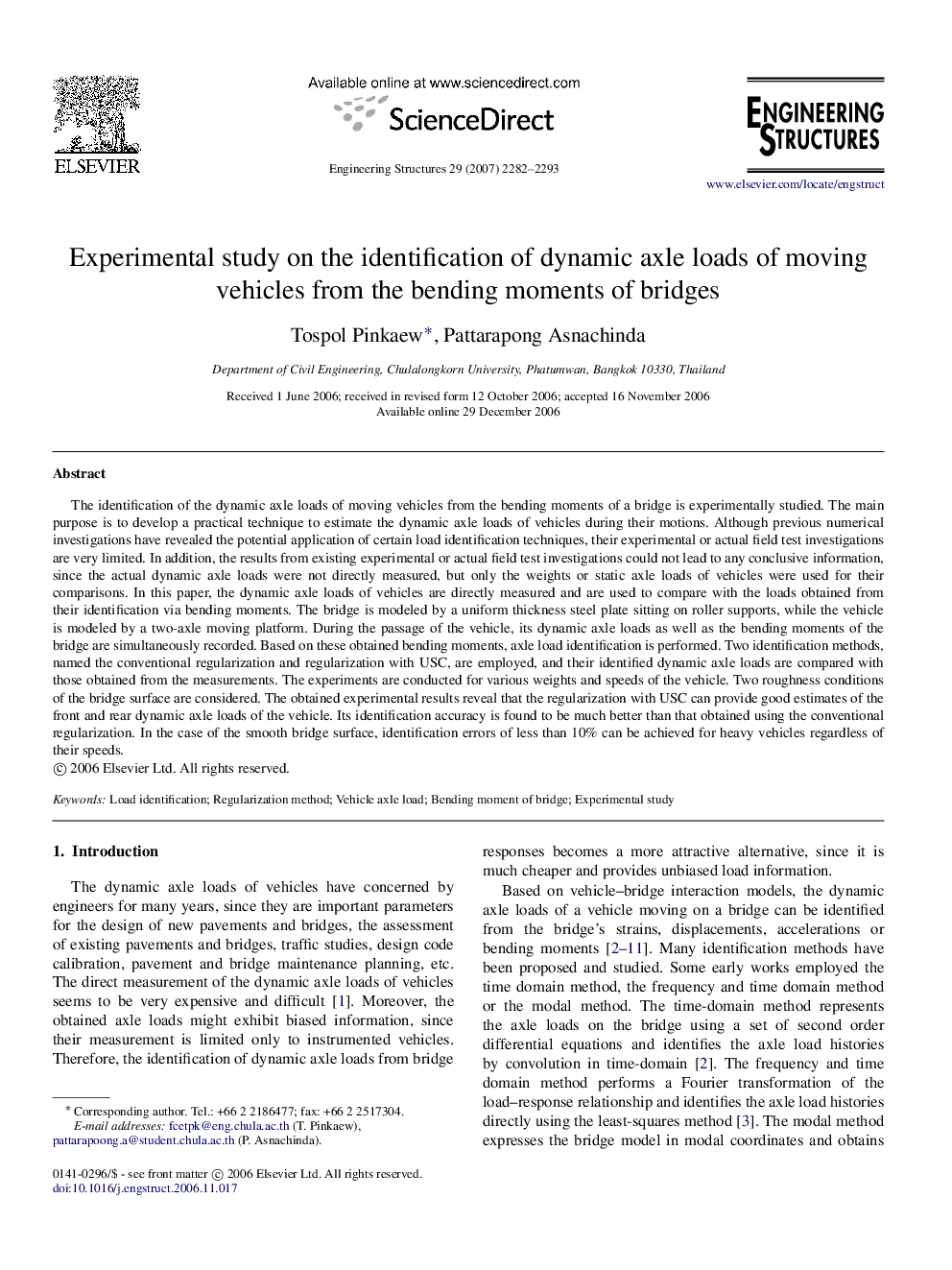| Article ID | Journal | Published Year | Pages | File Type |
|---|---|---|---|---|
| 269161 | Engineering Structures | 2007 | 12 Pages |
The identification of the dynamic axle loads of moving vehicles from the bending moments of a bridge is experimentally studied. The main purpose is to develop a practical technique to estimate the dynamic axle loads of vehicles during their motions. Although previous numerical investigations have revealed the potential application of certain load identification techniques, their experimental or actual field test investigations are very limited. In addition, the results from existing experimental or actual field test investigations could not lead to any conclusive information, since the actual dynamic axle loads were not directly measured, but only the weights or static axle loads of vehicles were used for their comparisons. In this paper, the dynamic axle loads of vehicles are directly measured and are used to compare with the loads obtained from their identification via bending moments. The bridge is modeled by a uniform thickness steel plate sitting on roller supports, while the vehicle is modeled by a two-axle moving platform. During the passage of the vehicle, its dynamic axle loads as well as the bending moments of the bridge are simultaneously recorded. Based on these obtained bending moments, axle load identification is performed. Two identification methods, named the conventional regularization and regularization with USC, are employed, and their identified dynamic axle loads are compared with those obtained from the measurements. The experiments are conducted for various weights and speeds of the vehicle. Two roughness conditions of the bridge surface are considered. The obtained experimental results reveal that the regularization with USC can provide good estimates of the front and rear dynamic axle loads of the vehicle. Its identification accuracy is found to be much better than that obtained using the conventional regularization. In the case of the smooth bridge surface, identification errors of less than 10% can be achieved for heavy vehicles regardless of their speeds.
